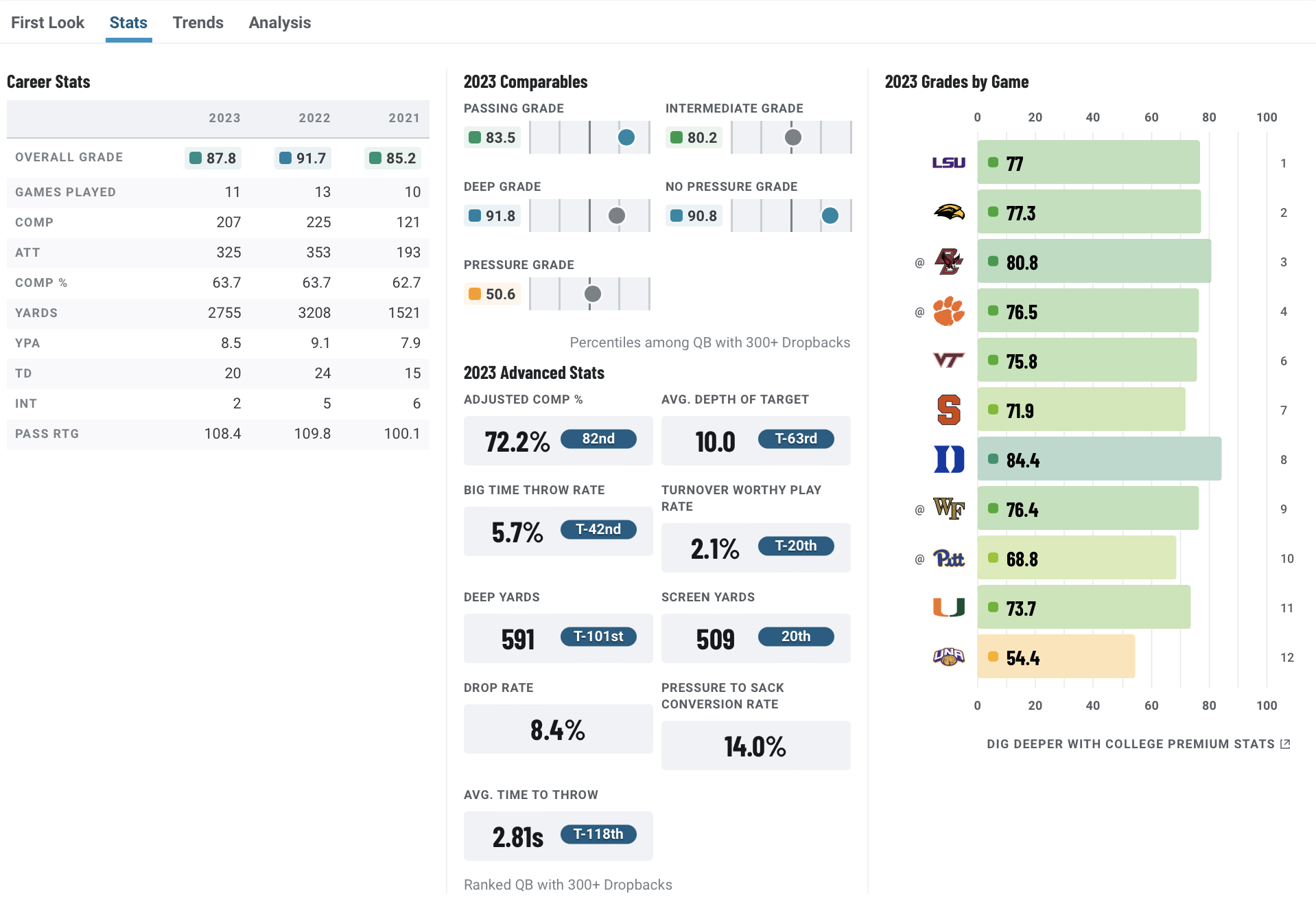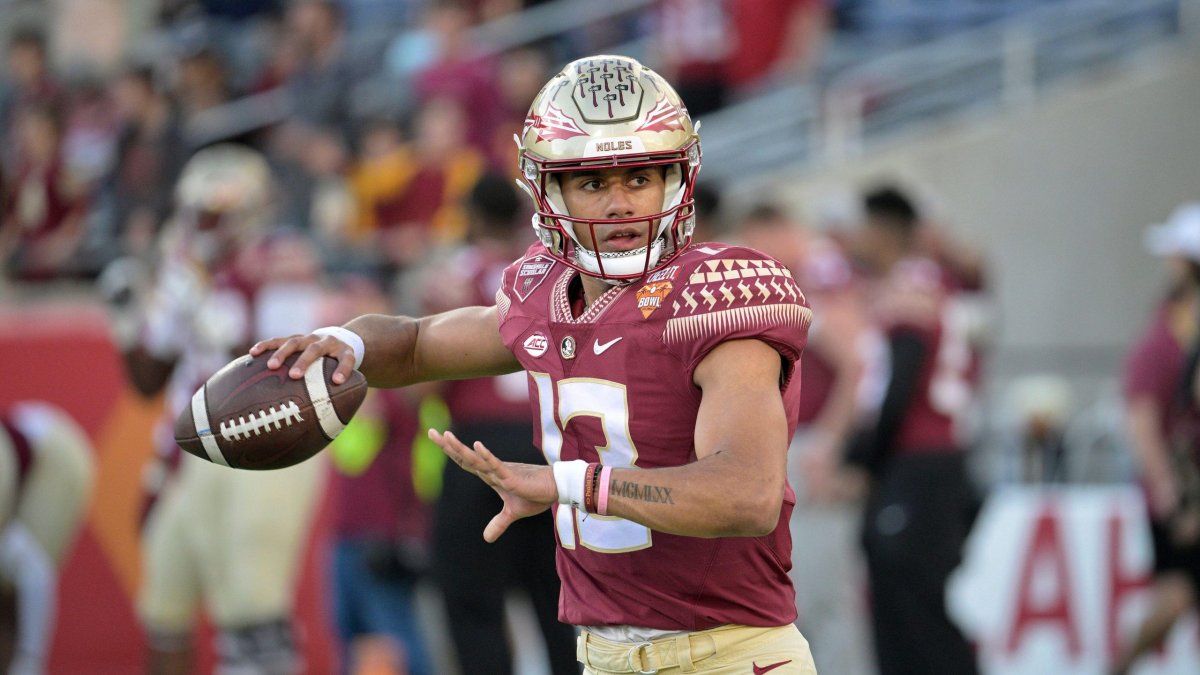The 2024 NFL Draft is fast approaching. The PFF big board is live, mock draft season is in full swing and the 2024 NFL Scouting Combine has wrapped up.
This year's draft presents an exciting quarterback class chock full of big names. USC's Caleb Williams headlines the group as one of the nation's premier playmakers, but North Carolina's Drake Maye, LSU's Jayden Daniels, Michigan's J.J. McCarthy and Oregon's Bo Nix have all been taken in the first round of recent mock drafts.
Let's look at Florida State‘s Jordan Travis, who was a contender for the 2023 Heisman Trophy before suffering a season-ending injury in Week 12.
Click here for more draft tools:
2024 Mock Draft Simulator | 2024 Big Board | 2024 Draft Guide
2024 Player Profiles | 2024 Mock Drafts | NCAA Premium Stats
SCOUTING SUMMARY
Travis is a good athlete who can operate an RPO and play-action offense well. His mobility is also a plus for escaping the pocket via scrambles. He is one of the smaller quarterbacks in the class, which brings natural drawbacks.
He also tends to have to put his whole body into throws that require more juice. His follow-through is erratic, as he will kick his leg out like a pitcher to generate more velocity. He has good intangibles. He is accurate and poised when throwing out of structure, and he doesn't mind throwing over the middle, even if he has to be on his toes.

WINS ABOVE AVERAGE
WAA represents the number of wins a player is worth over an average college football player and is a metric that evaluators can utilize to assess performance. It combines how well a player performed in each facet of play (using PFF grades) and how valuable each facet is to winning football games. The result is a first-of-its-kind metric that allows for cross-positional valuation and predicts future value at the player and team levels.
HOW TRAVIS RANKS IN THE STABLE METRICS
The most stable facets of quarterback play are those with the biggest sample sizes — even though they intuitively seem “easier.” When projecting a quarterback’s future output, their performance from a clean pocket, on early downs and with no play action should be weighted heavily, and these are strong components when projecting PFF’s Wins Above Replacement metric. Good quarterbacks dominate these situations, while lesser quarterbacks rank near the bottom of the league. Negatively graded plays are also highly correlated from year to year, meaning the quarterback is largely in control of their negatives, while their positive plays may fluctuate due to supporting cast and play calling.
Compared to other players with PFF college data, Travis’ metrics in the most predictive of data subsets measured up sufficiently.
He may struggle under pressure at the NFL level, but what makes Travis special is his ability to operate when kept clean.
The sixth-year quarterback threw for 15 touchdowns and 2,296 yards despite missing two games at the end of the season. His quick decision-making led him to the 11th-highest grade on RPOs last year.

TRAVIS’ PROJECTIONS
In league-average circumstances, here are Travis’ projections for yards per attempt and completion percentage as a rookie:
Let’s look at how Travis does when we make his situation better. With a low pressure rate, high play-action rate and more down-the-field looks, Travis would project fairly well.
Let’s also look at how Travis does when we make the situation less favorable. With a high pressure rate and low play-action rate, Travis’ projections don’t take a significant dip.
BOTTOM LINE FROM PFF's 2024 NFL DRAFT GUIDE
Travis is a good athlete, a tough competitor and a QB who has great intangibles for out-of-structure plays. His follow-through fundamentals are a mess, likely due to him needing more power on most throws, which leads to inconsistencies.
He is a developmental quarterback who will be a fan favorite no matter where he goes (likely on Day 3).




 © 2025 PFF - all rights reserved.
© 2025 PFF - all rights reserved.